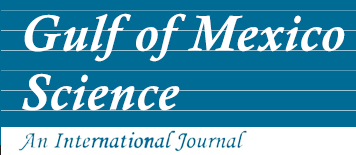Alternate Title
Mitochondrial DNA Diversity and Population Structure of Spotted Seatrout (Cynoscion nebulosus) in Coastal Waters of the Southeastern United States
Abstract
Restriction-site variation in mitochondrial (mt)DNA was examined among 470 spotted seatrout (Cynoscion nebulosus) sampled from eight localities in the northern Gulf of Mexico (Gulf) and two localities along the southeastern (Atlantic) coast of the United States. mtDNA fragment patterns generated 81 distinct mtDNA haplotypes (genotypes), three of which were found in 64% of the individuals assayed. Nucleotide sequence divergence among mtDNA haplotypes ranged from 0.148 to 1.808% and averaged (±SD) 0.676 ± 0.296%. Significant heterogeneity in mtDNA haplotype frequencies was detected between regions (i.e., Gulf vs Atlantic) and among sample localities from the northern Gulf. The latter appears to stem primarily (but not exclusively) from heterogeneity among samples from the western Gulf. Frequency plots of two of the common mtDNA haplotypes revealed strong east-west clines across the northern Gulf, with distinctive frequency discontinuities ("steps") between Gulf and Atlantic samples and between the westernmost sample in the Gulf (the lower Laguna Madre in Texas) and the next-most geographically proximate sample to the east. Spatial autocorrelation analysis of mtDNA haplotype frequencies among samples from the northern Gulf revealed a strong isolation-by-distance effect. These results support the hypothesis that spotted seatrout are spatially subdivided into discrete subpopulations or stocks. Divergence between Gulf and Atlantic subpopulations is likely related to historical vicariance, stemming from climatic changes occurring during glacial times. Other factors likely reduce present-day gene flow between subpopulations in the two regions. Divergence among subpopulations in the northern Gulf is more likely due to behavioral factors that limit (female) dispersal from a natal bay or estuary. The latter is consistent with studies of life history and returns from mark-and-recapture experiments. mtDNA diversity, an index of evolutionary effective (female) population size, also differed significantly among samples, with spotted seatrout from the lower Laguna Madre possessing appreciably reduced mtDNA diversity. This indicates a reduction in the effective number of females in the lower Laguna Madre and suggests that careful monitoring of spotted seatrout in the estuary may be warranted.
Recommended Citation
Gold, J. R., L. R. Richardson and C. Furman.
1999.
Mitochondrial DNA Diversity and Population Structure of Spotted Seatrout (Cynoscion nebulosus) in Coastal Waters of the Southeastern United States.
Gulf of Mexico Science
17
(1).
Retrieved from https://aquila.usm.edu/goms/vol17/iss1/5

